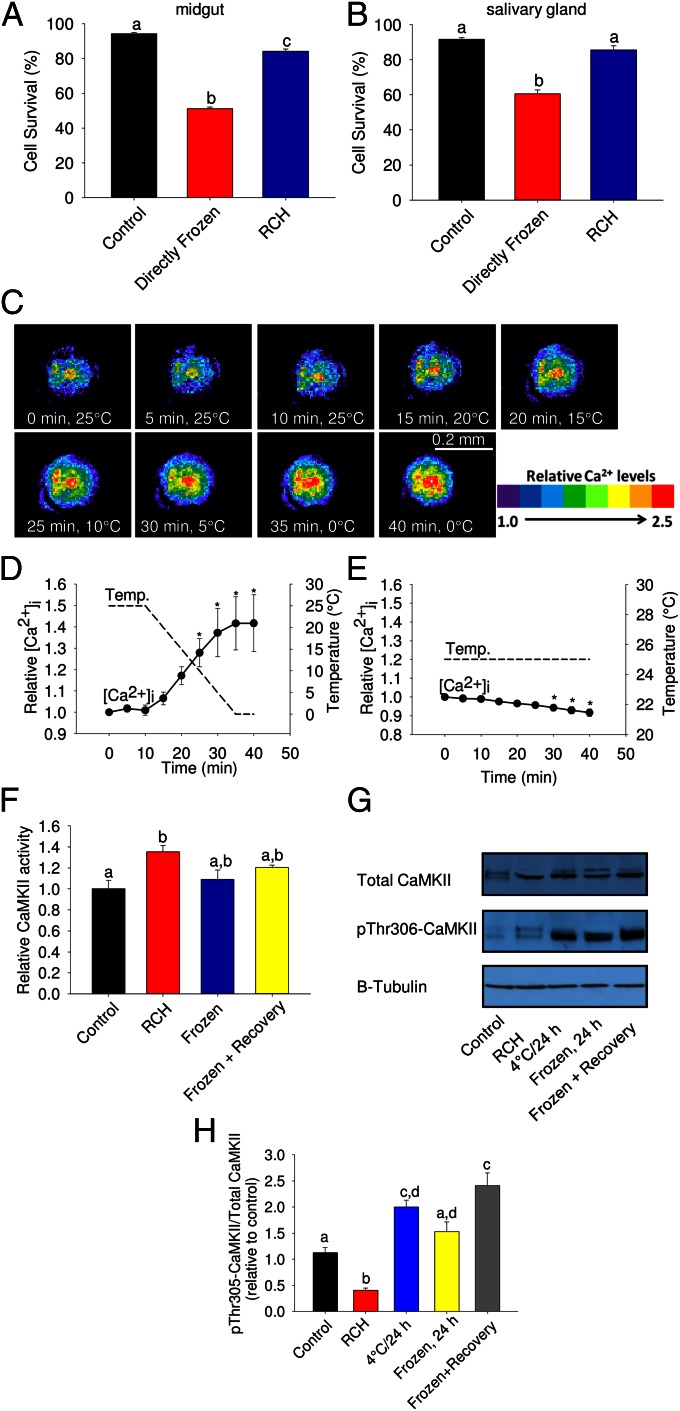Fig. 1.
Rapid cold hardening reduces freezing injury in tissues of the goldenrod gall fly, E. solidaginis and activates calcium-signaling pathways. (A and B) Effect of ex vivo RCH (slow ramping from 4 °C to −20 °C over 1 h) on cell viability of (A) midgut and (B) salivary gland following freezing at −20 °C. (C–E) Intracellular calcium as a function of temperature in tracheal cells of E. solidaginis. (F) Activity of calcium/calmodulin-dependent protein kinase II (CaMKII) following RCH, freezing for 24 h, and freezing with 2 h recovery. (G) Levels of both total CaMKII and phospho-Thr306 CaMKII in response to low temperature. (H) The ratio of phospho-Thr306 CaMKII to total CaMKII in response to low temperature. In A and B, “Control” tissues were held at 4 °C for 3 h, “Directly Frozen” tissues were directly transferred from 18 °C to −20 °C for 2 h whereas “RCH” tissues were gradually chilled from 4 °C to −20 °C over 1 h, then held at −20 °C for 2 h. In C, relative calcium concentration of a representative tracheal end cell is indicated by the provided color scale. In D and E, an asterisk indicates a significant difference between a particular time point and the initial calcium concentration (repeated measures ANOVA, post hoc Bonferroni, P < 0.05). In F–H, CaMKII activity and phosphorylation were measured in whole-body protein extracts. All values are mean ± SEM, n ≥ 4, with different letters indicating significant differences (ANOVA, Tukey, P < 0.05).

